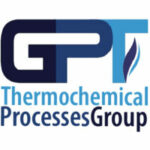ABOUT ME
aaa
PUBLICATIONS
2017
Atienza-Martínez, María; Rubio, I; Fonts, Isabel; Ceamanos, Jesús; Gea, Gloria
Effect of torrefaction on the catalytic post-treatment of sewage sludge pyrolysis vapors using $gamma$-Al2O3 Journal Article
In: Chemical Engineering Journal, vol. 308, pp. 264–274, 2017, ISSN: 13858947.
@article{Atienza-Martinez2017,
title = {Effect of torrefaction on the catalytic post-treatment of sewage sludge pyrolysis vapors using $gamma$-Al2O3},
author = {María Atienza-Martínez and I Rubio and Isabel Fonts and Jesús Ceamanos and Gloria Gea},
doi = {10.1016/j.cej.2016.09.042},
issn = {13858947},
year = {2017},
date = {2017-01-01},
journal = {Chemical Engineering Journal},
volume = {308},
pages = {264--274},
publisher = {Elsevier B.V.},
abstract = {This work examines the influence of sewage sludge pre-treatment by torrefaction on the distribution and properties of the products obtained from its pyrolysis followed by catalytic post-treatment of the hot pyrolysis vapors. Sewage sludge was first torrefied in an auger reactor under two different conditions: temperature of 250 °C and 275°C and average solid residence times of 13 min and 24 min, respectively. Pyrolysis was conducted at 530 °C in a fluidized bed reactor. The catalytic post-treatment of the hot pyrolysis vapors was carried out in a fixed bed reactor using gamma-alumina ($gamma$-Al2O3) as a catalyst. The experimental results showed that the combination of the torrefaction pre-treatment with the catalytic post-treatment of the hot pyrolysis vapors did not noticeably improved the properties of the liquid organic phases for use as a fuel, in terms of O/C molar ratio and nitrogen content, compared to pyrolysis of sewage sludge with the same catalytic post-treatment of the hot pyrolysis vapors but without the torrefaction pre-treatment. Generally, the torrefaction did not have effect on the type of chemical families identified in the liquid phases and had little effect on the proportion of these families. The advantages of the combination of treatments were, on the one hand, the catalyst saving resulting from the lower amount of vapors generated by the pyrolysis of torrefied sewage sludge and, on the other hand, the slight decrease in the coke yield.},
keywords = {},
pubstate = {published},
tppubtype = {article}
}
2015
Atienza-Martínez, María; Fonts, Isabel; Lázaro, Luisa; Ceamanos, Jesús; Gea, Gloria
Fast pyrolysis of torrefied sewage sludge in a fluidized bed reactor Journal Article
In: Chemical Engineering Journal, vol. 259, pp. 467–480, 2015, ISSN: 13858947.
@article{Atienza-Martinez2015a,
title = {Fast pyrolysis of torrefied sewage sludge in a fluidized bed reactor},
author = {María Atienza-Martínez and Isabel Fonts and Luisa Lázaro and Jesús Ceamanos and Gloria Gea},
doi = {10.1016/j.cej.2014.08.004},
issn = {13858947},
year = {2015},
date = {2015-01-01},
journal = {Chemical Engineering Journal},
volume = {259},
pages = {467--480},
publisher = {Elsevier},
abstract = {The pyrolysis of dry and of torrefied sewage sludge in a lab-scale fluidized bed reactor has been studied in order to determine whether torrefaction pre-treatment could enhance the properties of the liquid product obtained after pyrolysis. The aim of this work is to evaluate the influence of the torrefaction temperature (220-320°C) and average solid residence time (3.6-10.2min) on the product distribution and the properties of the pyrolysis products. Pyrolysis was conducted at 530°C with an average solid residence time of 5.7min and a nitrogen volumetric flow per reactor area of 0.074m3(STP)m-2s-1 (measured at 0°C and 1.01textperiodcentered105Pa). The experimental results show that torrefaction pre-treatment affects the pyrolysis liquid product, although it does not improve the homogeneity of the liquid. Specifically, it reduces the yields of water and the liquid aqueous phase obtained in the pyrolysis step, especially after torrefaction under the most severe conditions, but it does not have a great effect on the properties of the liquid organic phases obtained. The cumulative yields of gas and organic compounds from the two-step process are not different from the yields obtained from one-step pyrolysis. textcopyright 2014 Elsevier B.V.},
keywords = {},
pubstate = {published},
tppubtype = {article}
}
Atienza-Martínez, María; Mastral, José Francisco; Ábrego, Javier; Ceamanos, Jesús; Gea, Gloria
Sewage sludge torrefaction in an auger reactor Journal Article
In: Energy and Fuels, vol. 29, no. 1, pp. 160–170, 2015, ISSN: 15205029.
@article{Atienza-Martinez2015b,
title = {Sewage sludge torrefaction in an auger reactor},
author = {María Atienza-Martínez and José Francisco Mastral and Javier Ábrego and Jesús Ceamanos and Gloria Gea},
url = {https://pubs.acs.org/sharingguidelines},
doi = {10.1021/ef501425h},
issn = {15205029},
year = {2015},
date = {2015-01-01},
journal = {Energy and Fuels},
volume = {29},
number = {1},
pages = {160--170},
publisher = {American Chemical Society},
abstract = {A lab-scale auger reactor was used for the study of dry sewage sludge torrefaction. The influence of the torrefaction temperature (between 250 and 300 °C) and the solid residence time (between 13 and 35 min) on the product distribution and properties was investigated. The results have shown that both parameters affect dry sewage sludge torrefaction products to a similar extent within the ranges of study. The yield of torrefied sewage sludge decreases when increasing the torrefaction temperature and the solid residence time, while the yields of liquid and noncondensable gases show the opposite trend. Carbon dioxide and hydrogen sulfide are the major noncondensable products. The yield of water is higher than the initial moisture content of sewage sludge. Organic compounds are also released during torrefaction, especially under severe conditions. Torrefaction liquid separates into an organic phase and an aqueous phase. The former is rich in oxygen-containing aliphatic compounds and steroids and their derivatives. The latter is rich in oxygen-containing aliphatic compounds and oxygen- and nitrogen-containing aliphatic compounds. Torrefaction pretreatment eases sewage sludge grindability and improves some of its fuel properties. O/C and H/C molar ratios of the torrefied solid are lower than those of the dry sewage sludge, while the higher heating value (daf) is higher. The energy density is higher under specific torrefaction conditions.},
keywords = {},
pubstate = {published},
tppubtype = {article}
}
2013
Atienza-Martínez, María; Fonts, Isabel; Ábrego, Javier; Ceamanos, Jesús; Gea, Gloria
Sewage sludge torrefaction in a fluidized bed reactor Journal Article
In: Chemical Engineering Journal, vol. 222, pp. 534–545, 2013, ISSN: 13858947.
@article{Atienza-Martinez2013,
title = {Sewage sludge torrefaction in a fluidized bed reactor},
author = {María Atienza-Martínez and Isabel Fonts and Javier Ábrego and Jesús Ceamanos and Gloria Gea},
url = {http://www.sciencedirect.com/science/article/pii/S1385894713002416},
issn = {13858947},
year = {2013},
date = {2013-04-01},
journal = {Chemical Engineering Journal},
volume = {222},
pages = {534--545},
abstract = {Torrefaction of sewage sludge in a lab-scale fluidized bed reactor was studied in order to know if this pre-treatment could enhance the properties of this waste in subsequent thermochemical processing, such as pyrolysis. The influence was studied of two important torrefaction operational parameters, temperature (220–320°C) and solid residence time (3.6–10.2min), on the product distribution and properties. Taking into account the operation conditions evaluated in this work, torrefaction temperature affects solid product properties at long solid residence times (longer than 6.1min) and that the effect of solid residence time is only significant at the highest temperature (320°C). Severe torrefaction conditions result in the release of bonded water which could enhance some properties of the liquid obtained in the ensuing pyrolysis process. However, the torrefaction pre-treatment also implies that part of the extractives is lost from the raw material. Compared to dry raw sewage sludge, the energy density of sewage sludge after torrefaction increases under certain conditions. The removal of H2O and CO2 during the torrefaction step reduces the O/C ratio in the torrefied solid up to 0.12 (66.70% reduction compared to 0.37 in raw sewage sludge) which could be a benefit for subsequent thermochemical treatments. For example, one of the main drawbacks of pyrolysis liquids is their high oxygen content.},
keywords = {},
pubstate = {published},
tppubtype = {article}
}
2008
García-Bacaicoa, Pedro; Mastral, José Francisco; Ceamanos, Jesús; Berrueco, César; Serrano, S
Gasification of biomass/high density polyethylene mixtures in a downdraft gasifier Journal Article
In: Bioresource Technology, vol. 99, no. 13, pp. 5485–5491, 2008, ISSN: 09608524.
@article{Garcia-Bacaicoa2008,
title = {Gasification of biomass/high density polyethylene mixtures in a downdraft gasifier},
author = {Pedro García-Bacaicoa and José Francisco Mastral and Jesús Ceamanos and César Berrueco and S Serrano},
doi = {10.1016/j.biortech.2007.11.003},
issn = {09608524},
year = {2008},
date = {2008-09-01},
journal = {Bioresource Technology},
volume = {99},
number = {13},
pages = {5485--5491},
publisher = {Elsevier},
abstract = {In this work, an experimental study of the thermal decomposition of mixtures of wood particles and high density polyethylene in different atmospheres has been carried out in a downdraft gasifier with a nominal processing capacity of 50 kg/h. The main objective was to study the feasibility of the operation of the gasification plant using mixtures and to investigate the characteristics of the gas obtained. In order to do so, experiments with biomass only and with mixtures with up to 15% HDPE have been carried out. The main components of the gas generated are N2 (50%), H2 (14%), CO (9-22%) and CO2 (7-17%) and its relatively high calorific value was adequate for using it in an internal combustion engine generator consisting of a modified diesel engine coupled with a 25 kV A alternator. textcopyright 2007 Elsevier Ltd. All rights reserved.},
keywords = {},
pubstate = {published},
tppubtype = {article}
}


